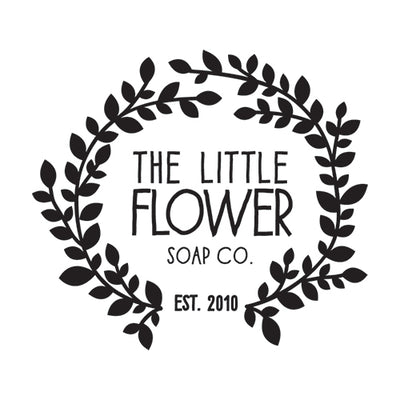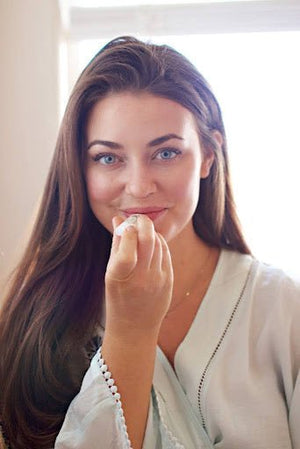What Causes Dry Lips?
Dry lips can come from all directions—inside and out. One common culprit? Dehydration. When you’re not drinking enough water, it often shows up in your skin and lips first. Winter weather, summer sun, wind, and dry indoor heat can all strip moisture, too.
Then there are the products we use. Many commercial lip balms contain ingredients that give a quick fix but actually dry your lips out more in the long run. Menthol, camphor, and artificial fragrances can irritate the delicate skin on your lips and kick off a cycle of overuse. The result? Lips that never feel quite hydrated enough.
Certain medical conditions (like eczema, psoriasis, or thyroid issues) and some medications (especially for allergies or acne) can also contribute to persistent dryness.
Signs and Symptoms of Dry Lips
Dry lips don’t just feel rough—they can peel, crack, sting, or even bleed. You might notice tightness, flaking, or a burning feeling when eating spicy or acidic foods. Occasional dryness is normal, but if your lips stay chapped no matter what you do, it could point to an underlying issue—or a balm that isn’t doing its job.
Choosing the Right Lip Balm
Key Ingredients to Look For
A truly effective natural lip balm starts with nourishing oils and protective waxes. Look for ingredients like:
-
Coconut oil and jojoba oil, which mimic your skin’s natural moisture barrier
-
Shea butter for deep hydration
-
Beeswax or candelilla wax, which helps seal in moisture
-
Vitamin E, a skin-loving antioxidant that promotes healing
Even better? Choose a balm that makes lip care feel like a treat. Flavored balms like Vanilla, Lavender, Mango, or Peppermint combine function with a little sensory self-care. For something cozy and nostalgic, Almond or Raspberry is a comforting pick, while Piña Colada and Bourbon bring a splash of playful indulgence.
Avoid synthetic additives, petroleum-based ingredients, and artificial fragrances—they’re more likely to irritate your lips than help them heal.
Homemade Lip Balm Recipes
Making your own balm is easier than you think—and it lets you control exactly what goes on your skin. Here are two easy DIY recipes to get started:
Coconut Oil & Beeswax Balm
-
2 tablespoons coconut oil
-
1 tablespoon beeswax pellets
-
Optional: a few drops of peppermint or lavender essential oil
Melt oils and wax together in a double boiler, stir to combine, and pour into tins or tubes. Let cool completely before use.
Shea Butter & Jojoba Balm
-
2 tablespoons shea butter
-
1 tablespoon jojoba oil
-
Optional: a few drops of vanilla extract or raspberry flavor oil
Melt shea butter gently, then stir in the jojoba oil and any flavoring. Pour and cool as above. These balms make lovely handmade gifts, too!
Maintaining Lip Health
Hydration and Nutrition
Drinking plenty of water is step one. But don’t stop there. Eating foods rich in vitamins A, C, and E—like leafy greens, nuts, and avocados—can boost your skin’s ability to stay hydrated and heal. Omega-3 fatty acids (hello, salmon and flaxseeds) also support soft, supple lips from the inside out.
Protecting Your Lips from the Elements
Lips are extra vulnerable to the environment since they don’t have oil glands. In the winter, protect them from wind and cold with a balm that creates a barrier. In summer, look for one with SPF to guard against sunburn. Reapply often—especially after meals, drinks, or brushing your teeth.
A natural lip balm with a flavor you love—like refreshing peppermint, relaxing lavender, or tropical piña colada—makes it easy to keep up the habit.
Common Myths About Dry Lips
Myth 1: Drinking Water is All You Need
Yes, hydration is essential. But lips need outside help, too. Without a protective balm, environmental factors can still sap moisture, no matter how much water you drink.
Myth 2: All Lip Balms Are Created Equal
Definitely not. Some balms contain drying ingredients that only mask the problem. Reading the label matters—look for natural ingredients, nourishing oils, and flavored lip balms made with care, not fillers.
Conclusion
Dry lips don’t have to be a permanent part of your routine. With a little know-how, a quality natural lip balm, and a few simple daily habits, you can get back to soft, healthy lips that feel as good as they look.
Choosing products made with nourishing oils, real flavors (like mango, bourbon, or almond), and zero irritants makes all the difference. Whether you’re DIY-ing your balm or shopping from trusted small makers, the right choice will help you ditch the cycle of chapped lips for good.
Because self-care doesn’t have to be fancy—it just has to work.

